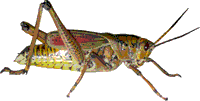Entomology Collections, General
Document Type
Article
Date of this Version
1998
Abstract
Two isolates of Beauveria bassiana (Balsamo) Vuillemin were used in bioassays against the diamondback moth, Plutella xylostella (L.). One isolate, ARSEF 4543, originated from a diamondback moth larva collected in New York and the other, Mycotech CHA, is the active ingredient in Mycotrol, a product registered for control of insect species belonging to several orders. Doseresponse assays of suspended spores sprayed on larvae resulted in similar LD50S (518 and 614 spores per square centimeter for ARSEF 4543 and Mycotech CHA, respectively) but different slopes for the probit regression lines (0.64 and 0.89). Survival times for larvae inoculated at a range of dosages were variable for ARSEF 4543 but decreased with increasing dosages for Mycotech CHA. Third and 4th instars were more susceptible than 2nd instars, although survival times varied between the 2 isolates for different instars. Larvae inoculated early in the 2nd or 3rd instar had shorter suvival times than those inoculated later in each instar. Spores of B. bassiana were readily detected on exuviae from inoculated larvae using fluorescence microscopy, indicating the significance of molting as a means of avoiding infection. The isolates did not differ significantly in their activities over a range of temperatures. Highest mortality and lowest survival times were observed at 25°C; mortality decreased and survival time increased at temperatures both above and below 25°C. These findings provide baseline information on the susceptiblity of P. xylostella to B. bassiana and they indicate the potential utility of a commercial preparation of B. bassiana for use against P. xylostella in the field.


Comments
Published in Environ. Entomol. 27(4): 1017-1021 (1998).